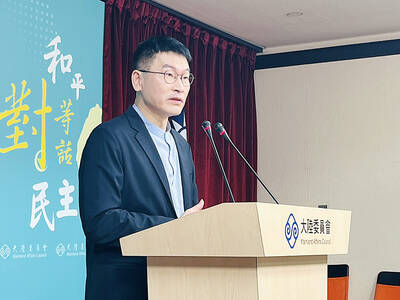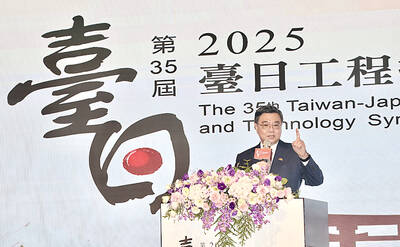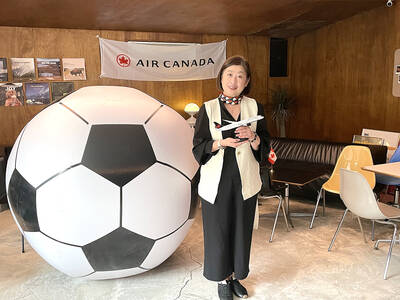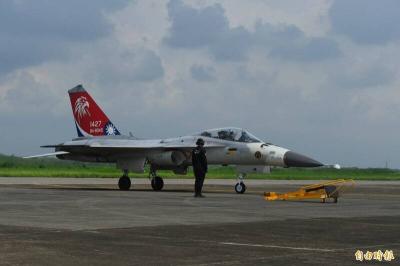President Hu Jintao (
"One area where there might be a change is in foreign policy," Lyman Miller, from the Hoover Institute of Stanford University who edits the China Leadership Monitor, said. "The idea of the peaceful rise of China was used in speeches last year by both Hu Jintao and [Premier] Wen Jiabao (
Miller said it was difficult to analyze what this meant "but it seems that there has been some contention over what this idea means with respect to relations with the United States and Taiwan."
Ostensibly the idea of a peaceful rise of an increasingly powerful China would entail the peaceful settlement of the Taiwan issue.
But it was unclear if this meant Beijing would back down from its threat to take the island by force should it declare independence.
"I don't expect great changes in either Sino-US relations or cross-strait relations, at least in the short run, but I think Hu is likely to focus more on resolving Chinas socio-economic difficulties than confronting the US," said Joseph Fewsmith, a China expert at Boston University.
On Hong Kong, Hu may be freer to address increasing demands for democracy, but it would likely only come in the context of the intra-party democratic reforms that he is already trying to pursue domestically.
"Hu's coming into power bodes well for Hong Kong and to a certain extent Taiwan," said Paul Harris, a specialist on Chinese politics at Hong Kong's Lingnan University.
"It's still a big question whether he can consolidate his power and carry out his reforms and whether or not he will experiment more with democracy, but the Hong Kong elections [earlier this month] showed that you can have elections and still maintain control," Harris said.
Gilles Guiheux, director of the Hong Kong-based French Center for the Study of Contemporary China, said the image Hu has already projected -- of a down-to-earth leader concerned with the problems of ordinary people -- could blossom more now.
"There was no way for Hu Jintao to become pragmatic on the Hong Kong issue while Jiang Zemin was around because issues relating to sovereignty and nationalism were issues that politically he could not compromise on because of the leadership struggle," he said.

LOW RISK: Most nations do not extradite people accused of political crimes, and the UN says extradition can only happen if the act is a crime in both countries, an official said China yesterday issued wanted notices for two Taiwanese influencers, accusing them of committing “separatist acts” by criticizing Beijing, amid broadening concerns over China’s state-directed transnational repression. The Quanzhou Public Security Bureau in a notice posted online said police are offering a reward of up to 25,000 yuan (US$3,523) for information that could contribute to the investigation or apprehension of pro-Taiwanese independence YouTuber Wen Tzu-yu (溫子渝),who is known as Pa Chiung (八炯) online, and rapper Chen Po-yuan (陳柏源). Wen and Chen are suspected of spreading content that supported secession from China, slandered Chinese policies that benefit Taiwanese and discrimination against Chinese spouses of

ALIGNED THINKING: Taiwan and Japan have a mutual interest in trade, culture and engineering, and can work together for stability, Cho Jung-tai said Taiwan and Japan are two like-minded countries willing to work together to form a “safety barrier” in the Indo-Pacific region, Premier Cho Jung-tai (卓榮泰) yesterday said at the opening ceremony of the 35th Taiwan-Japan Modern Engineering and Technology Symposium in Taipei. Taiwan and Japan are close geographically and closer emotionally, he added. Citing the overflowing of a barrier lake in the Mataian River (馬太鞍溪) in September, Cho said the submersible water level sensors given by Japan during the disaster helped Taiwan monitor the lake’s water levels more accurately. Japan also provided a lot of vaccines early in the outbreak of the COVID-19 pandemic,

PROMOTION: Travelers who want a free stopover must book their flights with designated travel agents, such as Lion Travel, Holiday Tours, Cola Tour and Life Tours Air Canada yesterday said it is offering Taiwanese travelers who are headed to North America free stopovers if they transit though airports in Japan and South Korea. The promotion was launched in response to a potential rise in demand for flights to North America in June and July next year, when the US, Canada and Mexico are scheduled to jointly host the FIFA World Cup, Air Canada said. Air Canada offers services to 13 of the 16 host cities of the tournament’s soccer games, including Toronto and Vancouver; Mexico City, Guadalajara and Monterrey in Mexico; Atlanta, Georgia; Boston; Dallas; Houston;

The US approved the possible sale to Taiwan of fighter jet spare and repair parts for US$330 million, the Pentagon said late yesterday, marking the first such potential transaction since US President Donald Trump took office in January. "The proposed sale will improve the recipient's capability to meet current and future threats by maintaining the operational readiness of the recipient's fleet of F-16, C-130," and other aircraft, the Pentagon said in a statement. Trump previously said that Chinese President Xi Jinping (習近平) has told him he would not invade Taiwan while the Republican leader is in office. The announcement of the possible arms